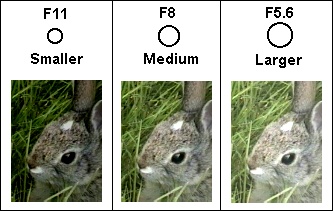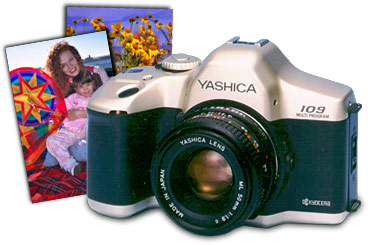Exposure
Controls
When you take a picture, you "expose" the film
to light. The two parts which work together to control your exposure are the APERTURE and
SHUTTER.
APERTURE
The aperture is an opening that changes in size to admit
more or less light (similar to the iris of an eye). The numbers on the aperture control
are called F-stops and referred to as F16, F11, F8, and so on. The aperture control may
look something like this:

- Here's how it works:
- The larger the F-stop number, the
smaller the opening.
- Each number higher lets in half as much light as one number
lower.
For example, F5.6 admits twice as much light as F8, while
F11 lets in only half as much.

The aperture doesn't work alone, however. The shutter speed is responsible for exposure, too. It controls the amount
of time light is allowed to reach the film.
SHUTTER
The shutter is a device that opens and closes at varying speeds to determine the amount of
time the light entering the aperture is allowed to reach the film.
Shutter speed is measured in fractions of a second. 125
means 1/125 of a second, 60 means 1/60. Typical shutter speeds range from 1 second to
1/1000. A shutter speed setting for a bright, sunny day - using an aperture of F11 - might
be 1/125 second. A cloudy day might use 1/60 second with the same aperture, exposing the
film to light for a longer period of time.
The settings for a good exposure are determined by a light
meter. (Most 35mm cameras have a built-in light meter that shows you the appropriate
settings, or automatically controls them.)
Aperture and shutter settings work together. Because the
shutter (like the aperture) approximately halves or doubles the light reaching the film
with each change in setting, a number of different combinations of settings can result in
the same exposure.
| Aperture |
F22 |
F16 |
F11 |
F8 |
F5.6 |
| Shutter |
1/30 |
1/60 |
1/125 |
1/250 |
1/500 |
|
Any of the combinations shown above would
result in approximately the same exposure.
If all the settings result in the same exposure, why would
you want to use F5.6 at 1/125 instead of F11 at 1/30? Two good reasons: By selecting the
right combination for the situation you can control depth of field
and motion blur. |

